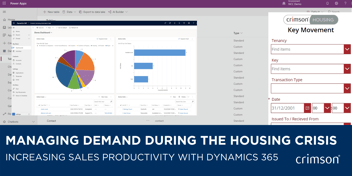How to Increase Your Customer Satisfaction Without Increasing Costs
Customers – they’re the focal point of any business. Their presence and their experience at an establishment can make or break the entire organisation.
It doesn’t matter how big a company is, how many products they have to offer, or the place they have in their industry. A company has to put customer satisfaction at the forefront of their objectives list to be successful.
Knowing how to increase customer satisfaction is an important knowledge point for any company. But it is a little more complex than that. Every business owner and customer service director knows that everything they do is a balancing act. They may want to pursue a given objective, but they realise they have to do it within the realm of cost efficiency.
Being able to boost customer satisfaction without boosting costs can seem tricky – but it is possible to raise one metric without raising the other. We’d like to share some tips on how to keep those patrons pleased without racking up extra expenses.
Teamwork Breeds a Customer-Focused Company Culture
When it comes to keeping your customers happy, it is a team effort. It isn’t just the people who interact directly with your customers who need to be focused on this objective. From the highest-ranking manager to the newest hire, everyone plays a role.
The reason for this is that customer satisfaction isn’t just an objective – it’s a core component of company culture. When it is integrated into business plans, communication processes, and all sales efforts, the results will be better in most cases.
By helping team members collaborate to create this customer-focused company culture, you learn to serve customers better. Crimson helps you reach this goal with powerful Microsoft resources built to increase customer satisfaction.
Collaborative Teams Communicate Better and Save More
Take the Microsoft Dynamics 365 Customer Service toolkit. With it, you can take a more personable approach by communicating with customers on any channel they prefer, delivering personalised service quickly, and even setting yourself up to learn from each interaction.
The best part? This tool also helps you reduce costs by helping you use data more intelligently. And when your company is taking an approach toward helping the team work better together, you’ll likely enjoy reduced costs across other areas as well.
Examine the Customer Experience at Each Step
Customer satisfaction is often talked about in a simplified form – that is, it’s talked about in terms of the end goal rather than the path of getting there.
Customer service is more than just doing the right thing for the customer at the right time. It involves doing the right thing at every step of the process. From the time your customers reach out with initial inquiries and all the way to business processes like field service, it is important to keep in mind what the customer is experiencing.
We use the Microsoft’s field service toolkit to help companies engage customers and serve them more efficiently. You can improve operational proficiency by proactively detecting issues and resolving them as soon as possible.
You can also optimise your resources by scheduling field service only when it is necessary. When you think about how customers have different needs at each step of their relationship with a business, you understand new ways to help them.
For example, you can engage your customers by giving them the tools they need – these include self-service portals, proactive updates, and personal communications.
Don’t Underestimate the Value of Smaller Actions
When companies think in terms of cost-efficiency, they often fall into a trap. This trap lies in believing the monetary value of an action by a company is proportionate to the amount of satisfaction it brings to the customer.
For example, sending a tech two towns over to check on a customer’s problem may be an expensive task – and this may indeed solve a customer’s problem. But even a simple, smaller (and cheaper) action like responding to a customer’s email could bring them the same amount of satisfaction. The customer’s satisfaction could increase simply from knowing their inquiry was addressed.
Discovering Opportunities by Rethinking the Impact of Small Actions
Sometimes an action considered small based on the number of resources it takes can do a lot to increase customer satisfaction.
When companies understand that small actions can be just as appreciated as bigger ones, they will see there are many ways to increase satisfaction among customers without raising costs. This opens companies up to a wealth of possibilities regarding how to keep customer’s happier in cost-efficient ways.
Rely on the Data to Anticipate Customer Needs
What’s better than giving your customers what they ask for? Giving it to them before they have to ask. You don’t have to be a mind reader to do this – you just have to gather the right analytics and know how to use them.
Consider the Dynamic 365 AI solution for customer service. This tool lets you build loyalty and improve satisfaction through intelligent software.
By identifying trends, you can capitalise on them early. Reduce wait times, boost resolution percentage, and enhance your entire approach to managing customer relationships. Not only is it a smart move to keep your customers happy, but it can also help you save.
The AI aspect opens you up to possibilities like virtual agents, which can reduce costs by freeing up human agents and minimising wait times from the customer’s initial contact.
Balancing an Increase in Customer Satisfaction with Lower Costs
Companies don’t always have to incur more expenses to make progress. Increasing customer satisfaction is the best thing an organisation can do, and this can be done while keeping costs manageable.
The secret lies in thinking from the customer’s perspective and using the right tools. When we think like customers, we see how big of an impact small actions can have and how customers need satisfaction at every step of their interactions with businesses.
We at Crimson break down the tough tasks into smaller, more manageable objectives, and help you serve your customers with greater cost efficiency. To find out more, check out our Assess2Progress workshop, or our Art of the Problem workshop.


.png?width=352&name=Blog%20Images%20(1).png)